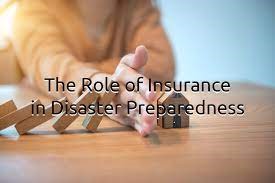The Role of Insurance in Disaster Preparedness: Safeguarding Communities Against Catastrophes
Insurance plays a vital role in disaster preparedness. It provides financial protection for individuals and businesses against unexpected losses caused by natural disasters. With the right insurance policies, people can recover faster and reduce the financial burden when disaster strikes.
Being prepared for disasters means understanding how insurance can support recovery efforts through various types of coverage. Knowing what insurance options are available can make a difference in how effectively one can respond during a crisis. This understanding is crucial for safeguarding assets and ensuring stability in uncertain times.
As disaster risks continue to increase globally, awareness of insurance’s importance in preparedness becomes even more critical. Having the right insurance not only builds resilience but also offers peace of mind in challenging situations.
Key Takeaways
- Insurance provides crucial financial support after disasters.
- Well-chosen policies enhance overall disaster preparedness.
- Awareness of insurance options aids in effective recovery strategies.
Fundamentals of Insurance in Disaster Management
Insurance plays a key role in helping communities prepare for and recover from disasters. Understanding the principles, types of coverage, and risk assessment is crucial for effective disaster management.
Principles of Disaster Risk Insurance
Disaster risk insurance is based on several important principles. Equity ensures that everyone pays a fair price based on their risk level. Next is solidarity, where a larger group shares the financial burden of loss.
Transparency is also vital. Policyholders must clearly understand what their insurance covers and any exclusions. Lastly, responsiveness ensures that insurance products adapt to changing risks and needs of communities, especially as climate change impacts disaster frequency and severity.
Types of Coverage for Disasters
Various insurance options exist for different types of disasters.
- Homeowners Insurance: This covers damage to homes from disasters like fires, floods, or earthquakes.
- Flood Insurance: Typically separate from homeowners insurance, it protects homes against water damage from floods.
- Business Interruption Insurance: This helps businesses recover lost income due to disasters that force temporary closures.
- Crop Insurance: This protects farmers from losses due to natural disasters affecting crops, like droughts or hurricanes.
Each type serves specific needs and offers varying levels of protection.
Assessment and Management of Disaster Risks
Assessing disaster risk involves analyzing both likelihood and potential impact. Risk assessments help identify vulnerable areas and populations. These assessments consider factors like geography, climate, and infrastructure.
Risk management strategies include mitigation and preparedness. Policymakers often develop emergency response plans that detail actions before, during, and after a disaster.
Insurance also plays a critical role in managing these risks. It provides financial support for recovery efforts. Proper assessment and management can lead to better insurance products that meet community needs.
Strategic Implementation and Challenges
Effective disaster preparedness requires integrating insurance into planning. This section discusses how to incorporate insurance, the role of public-private partnerships, and the challenges of adopting disaster insurance.
Incorporating Insurance into Disaster Preparedness Plans
Insurance should be a key part of disaster preparedness plans. These plans can use various types of insurance, such as property, business interruption, and flood insurance.
Steps to Incorporate Insurance:
- Risk Assessment: Identify risks related to potential disasters.
- Insurance Review: Analyze existing coverage and gaps.
- Community Involvement: Engage stakeholders in discussing needs and options.
By anticipating risks and planning accordingly, communities can safeguard resources and assure recovery. Incorporating insurance enhances resilience and prepares communities for unforeseen events.
Public-Private Partnerships in Disaster Insurance
Public-private partnerships (PPPs) are essential in enhancing disaster insurance. These partnerships can combine resources and expertise, leading to better coverage options.
Benefits of PPPs:
- Resource Sharing: Public agencies and private companies can share data and technology.
- Innovative Solutions: Collaboration often leads to new insurance products tailored for specific risks.
- Financial Support: Governments can offer subsidies or incentives for purchasing insurance.
PPPs help ensure that vulnerable populations receive necessary insurance coverage. They strengthen disaster preparedness and recovery efforts.
Challenges Facing Disaster Insurance Adoption
Several challenges hinder the adoption of disaster insurance. These can affect individuals, businesses, and communities.
Key Challenges:
- Affordability: High premiums may discourage people from buying insurance.
- Lack of Awareness: Many do not fully understand available options and benefits.
- Complexity of Policies: Confusing policy terms can deter potential buyers.
Addressing these challenges is crucial for effective disaster preparedness. Educational programs and simpler insurance products may improve adoption rates.
Also Read :
